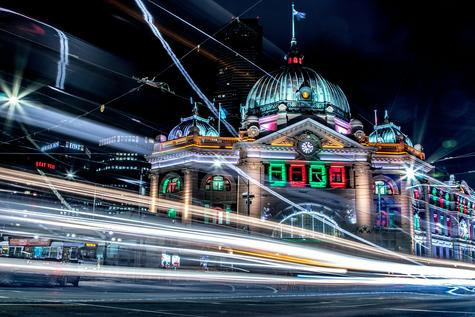General News
1 August, 2024
By hook or by crook
Heading to Melbourne but not looking forward to the CBD’s dreaded hook-turn intersections? The Royal Automobile Club of Victoria (RACV) feels your pain.

In an RACV poll, 44 per cent of Victorian respondents said hook turns were the most challenging driving practice on the state’s roads.
This was followed by parallel parking, reverse parking and three-point turns, RACV head of policy James Williams said.
“Mostly distinctive to Melbourne, hook turns are right turns made from a left-hand lane, originally introduced to mitigate the hold-up and delay of tram routes,” Mr Williams said.
“Hook turns allow trams and other motorists to travel through an intersection smoothly while motorists wanting to turn right wait in the far left-hand lane until the light turns green in the direction they are turning into.”
Mr Williams said hook turns had been shown to improve road safety and increase intersection capacity.
They are found in 49 locations across the City of Melbourne, as well as in Clarendon Street in South Melbourne.
“Due to their location, some survey respondents said they weren’t required to use hook turns while others stated they avoided driving in the city because of them,” Mr Williams said.
For regional Victorians visiting the big smoke form areas such as the Wimmera Mallee, being faced with a hook turn can be especially daunting.
However, Mr Williams said that once motorists understood the process this manoeuvre was “a great way to manage traffic flow and reduce congestion”.
“If you’re not comfortable with the process of a hook turn, completing the driving practice may seem confusing or overwhelming, particularly if done in peak traffic,” he said.
“However, they do allow vehicles and trams to continue through an intersection on a green light without being held up by a stationary vehicle waiting to turn right from the middle of the intersection.
“Hook turns are also safer than a right turn from the centre of an intersection as they reduce the need to switch lanes to navigate parked cars and vehicles turning right from the centre of an intersection.
“While hook turns increase safety, intersections are, by their nature, high-risk zones for road safety.
“RACV continues to advocate for government investment in upgrading metropolitan intersections, with safety as a priority.”
Mr Williams said to complete a hook turn at a signed intersection, the driver should enter the waiting area from the left-hand lane and engage the vehicle’s right indicator.
“Once the traffic light is green on the street to be entered and there is no further incoming or oncoming traffic, turn right,” he said.
He said RACV reminded motorists to follow other vehicles into the hook turn waiting area only if doing so would not obstruct other traffic or pedestrians or result in their vehicle having to stop on a crossing.
“Motorists should also be aware of cyclists,” he said.
“While a hook turn is mandatory at overhead signed intersections in Melbourne, cyclists can complete a hook turn at any intersection throughout Victoria unless a sign prohibits it.”
Mr Williams said anyone –regardless of age and experience – who lacked confidence in executing a hook turn could book a driving lesson at the RACV Drive School and/or practise turning through Melbourne intersections during low-pressure non-peak periods.
RACV also has resources available online, including an explainer video on its YouTube channel that shows the stages of the turn as seen from above.